
PMS or Parasitic Mite Syndrome is a condition that causes a honey bee colony to deteriorate and eventually dwindle away and die. There has not yet been a pathogen detected which causes the brood symptoms that appear with this syndrome. However there are always varroa mites present with this syndrome. The brood symptoms look similar to other diseases but the larvae don’t rope. Colonies with PMS will show symptoms of white larvae that are chewed or pecked down by workers. Larvae may appear sunken to the side of the cell and may show symptoms of white with some debris at the posterior end. Pupa will be chewed down/removed or the pupa face chewed part of the way down as seen in the photo. Most of the symptoms shown are from hygienic bees trying to remove varroa mite infested cells and or larvae/pupa from cells. There is sometimes color to the larvae and this is attributed to age, decomposition or secondary bacteria.
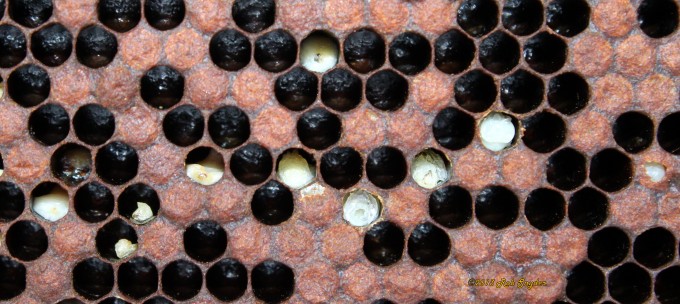
Symptoms:
• Spotty brood pattern, varroa mites present on adult bees.
• Mites can often be seen crawling across sealed brood.
• Mites can also be found in open brood cells (usually chewed down larvae, refer to images)
• Lack of adult population (time-dependent).
• Large colonies are aggravated by high varroa mite levels and often show increased aggressiveness, lack of eggs and developing larvae (due to unfit conditions for raising brood), supercedure cells are often present, crawling bees near hive entrance or bees with DWV (Deformed wing virus).
• No odor present until the chewed down larvae start to change color and decay.

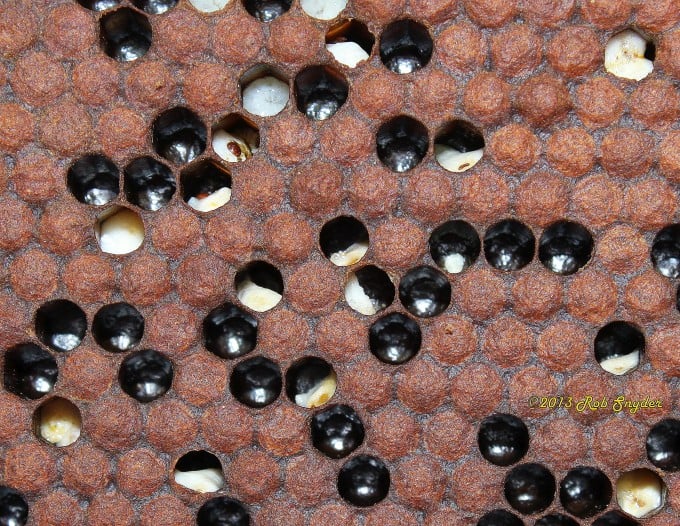

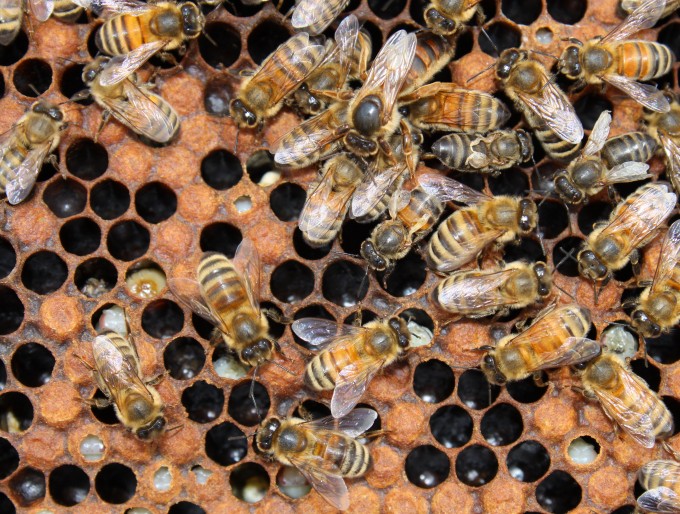
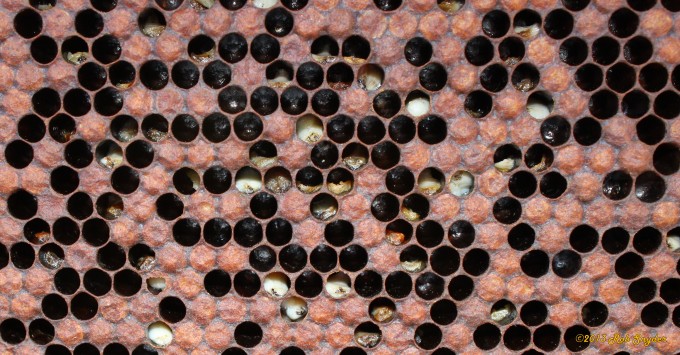
At this stage PMS looks very similar to European Foulbrood except the larvae are different ages and there is no uniformity when it comes to open brood symptoms.
Click here EFB Blog to see images of EFB.
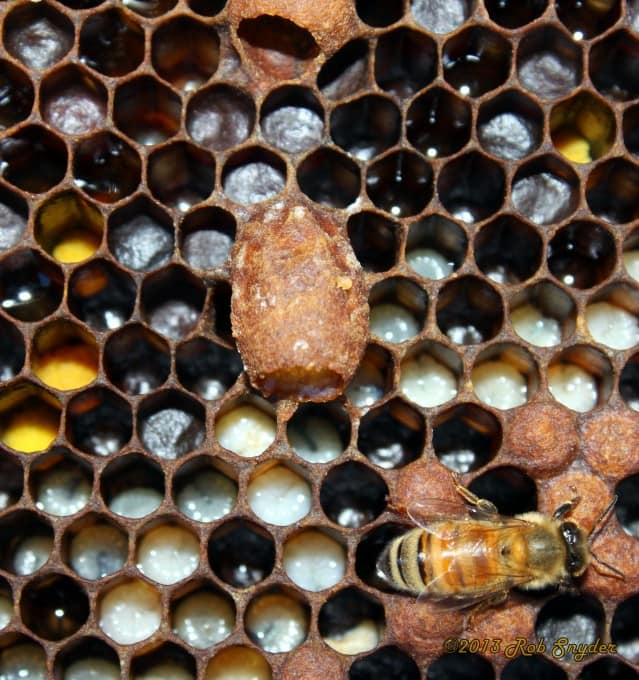
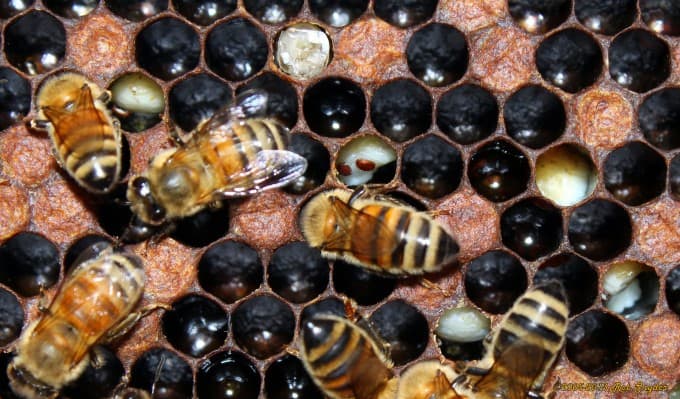
Treatments:
Keep varroa mite levels low. Monitor varroa mite levels or treat at least twice a year for varroa mites.
